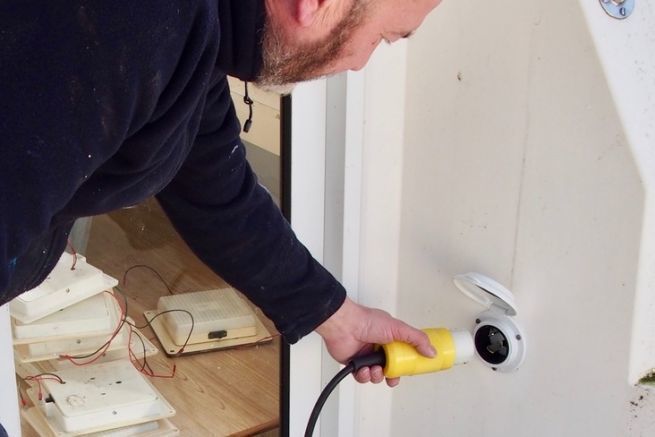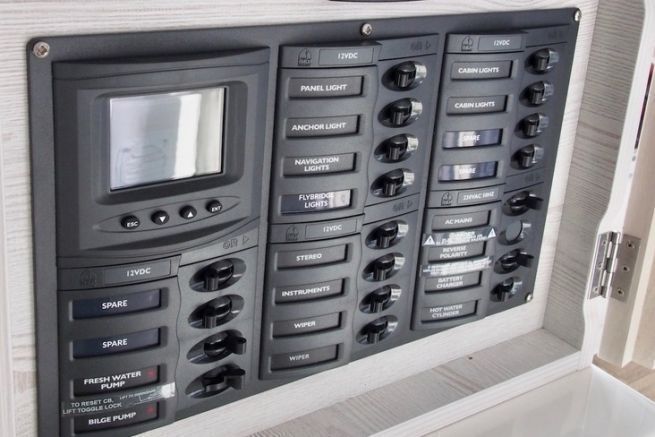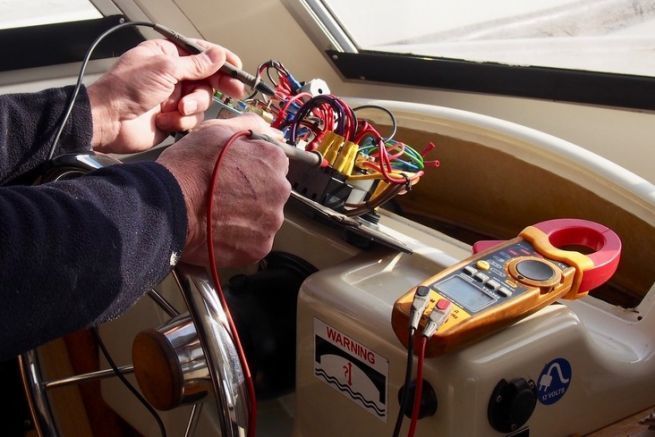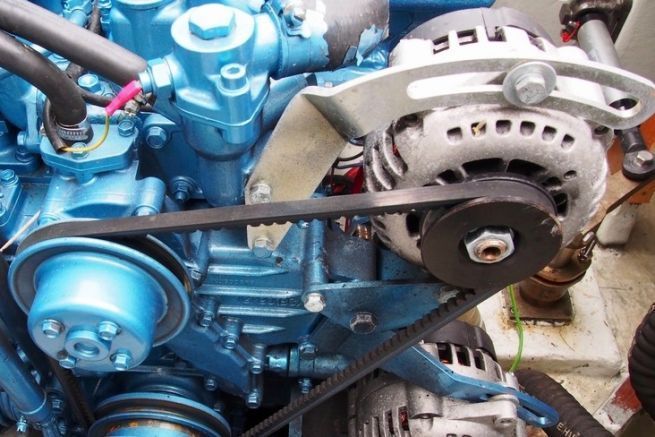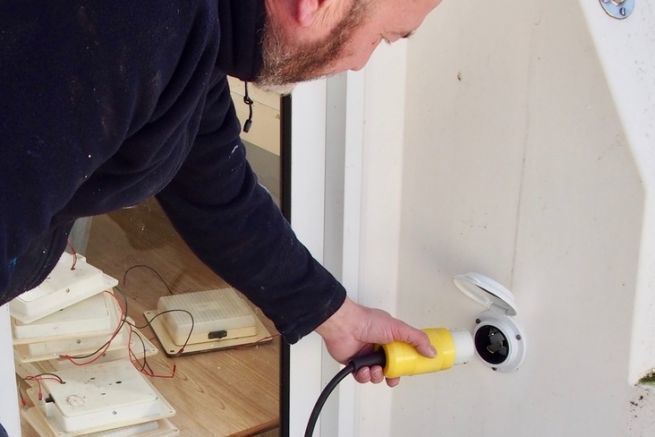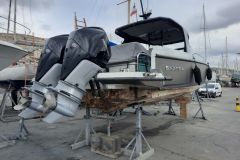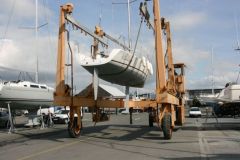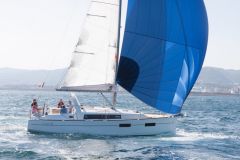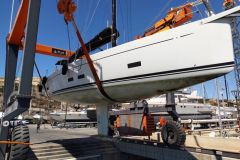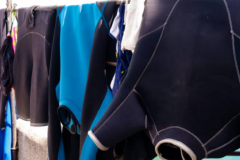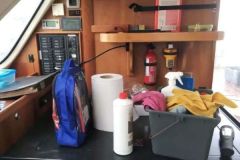In principle, nothing could be simpler than to connect your boat to the EDF network when you are moored. This allows you to use a battery charger, a vacuum cleaner, hand-held electrical tools or a space heater without any more constraints than at home. However, this type of current requires specific precautions, but also a certain intellectual rigor so that the extension cord does not turn into a tripwire.
A well-protected outlet
The plugs used in the electrical terminals of the ports are P17 standard. This standard implies having a power cord with an adapted plug at one end and another corresponding to the connection on the boat. The conductors of this extension cord must have a sufficient cross-section for the power of the electrical equipment on board. On the boat side, the built-in socket is protected by a cover, equipped with stainless steel contacts and a lock for the extension cord plug. Do-it-yourself work is not allowed! This socket must be protected from kicks and other risks of snagging or impact.
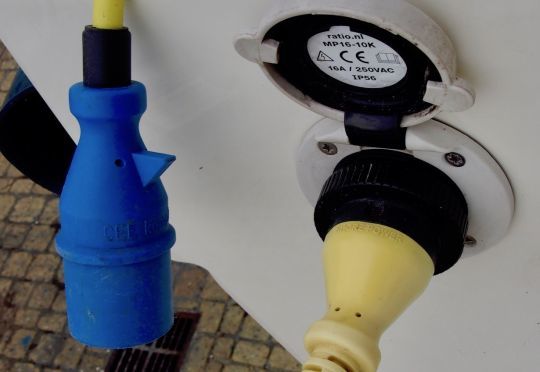
A separate electrical panel
Inside, the 220V circuit must be perfectly identified. It must have appropriate protections, first of all a differential circuit breaker of 30 milliamperes. It is mandatory! This protection must be placed at the beginning of the installation, just after the shore power. This device protects people by detecting current leaks and cutting off the current if the intensity of the leak exceeds 30 mA. Circuit breakers protect the installation against overcurrents and each circuit must be protected by a device of appropriate rating. It is convenient that the electrical panel has an indicator light. It indicates at a glance that the installation is under voltage. Indeed, many ports only deliver electricity for a limited time and the system must be reset regularly.
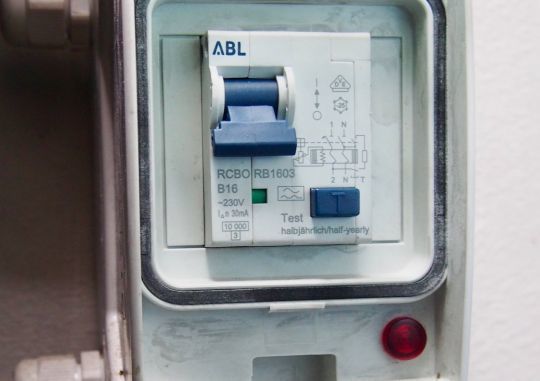
Do things in order!
At the dock, always connect your cord to the boat first before connecting the extension cord to the mains. This will prevent you from stepping over the lines with a live wire in your hand... It's never fun to wade through the water in the harbor, and the company of an extension cord distilling 220 volts doesn't add to the fun! If you have a tendency to be absent-minded, a reminder attached to the throttle lever will prevent you from forgetting when setting up the boat and the ensuing mishap if the electric cable is still in place...
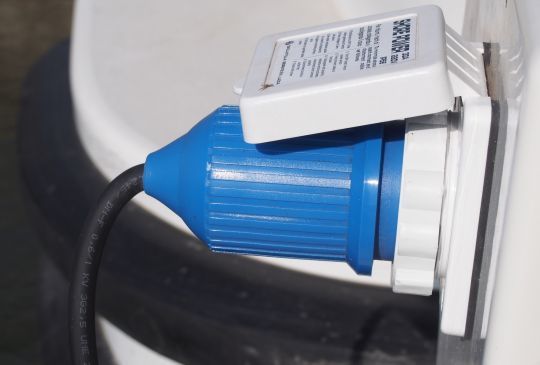
Converter or generator?
For those who don't frequent marinas, there are other ways to have 220V on board. The converter is a device that transforms the current of the batteries into 220V, at the cost of a fast discharge of these. The generator, generally driven by a thermal engine, allows to produce electricity in autonomy. The isolated models are expensive and are only suitable for respectable size units or for travel boats, but they work wherever you are.
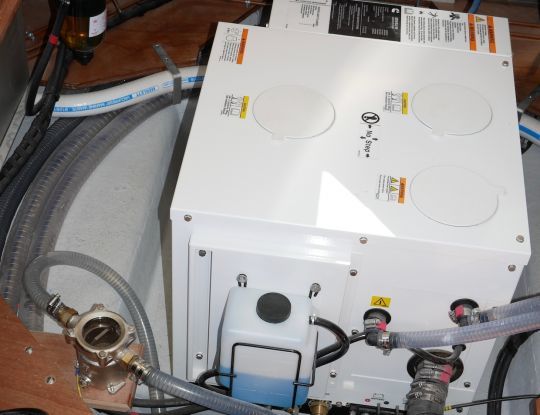
The useful and the futile
The boat is made to sail and therefore to function in autonomy. The ease of the 220 V "like at home" soon let its practical uses drift to other less essential ones. Without denying any modernism, we must be aware that this energy gentrification is a hindrance. It will prevent you from sailing as often and as far as you would like. It will keep you away from wild anchorages, forcing you to find a connected stopover to operate your now indispensable appliances.
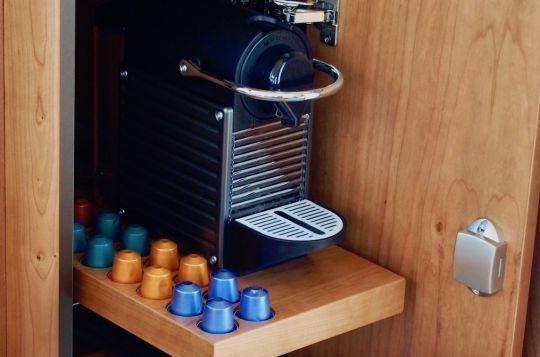
The 220V brings undeniable comfort on board, if only to keep the batteries charged when not sailing. It's up to each of us to make sure that it doesn't become a string that keeps you on the dock.

